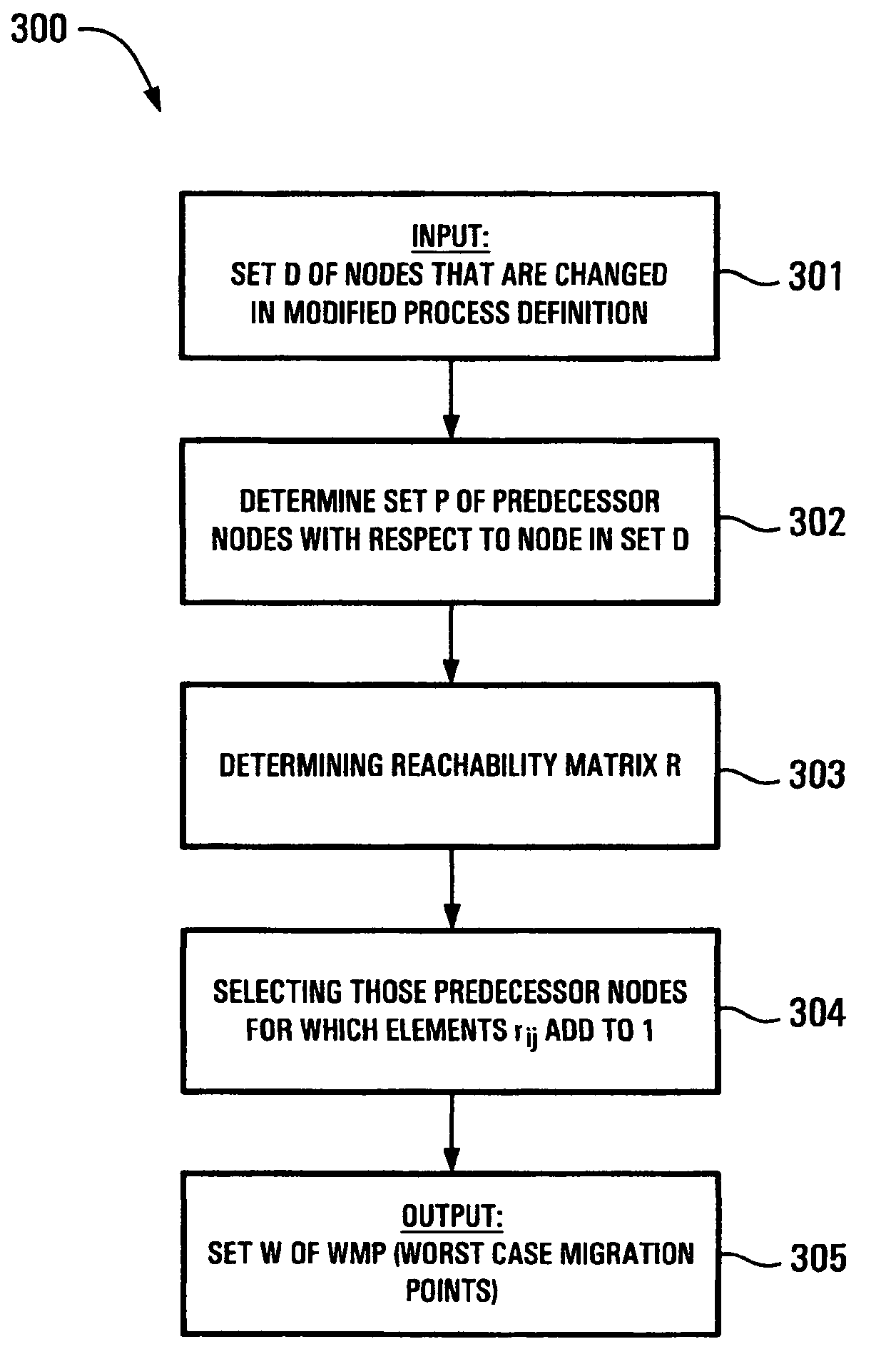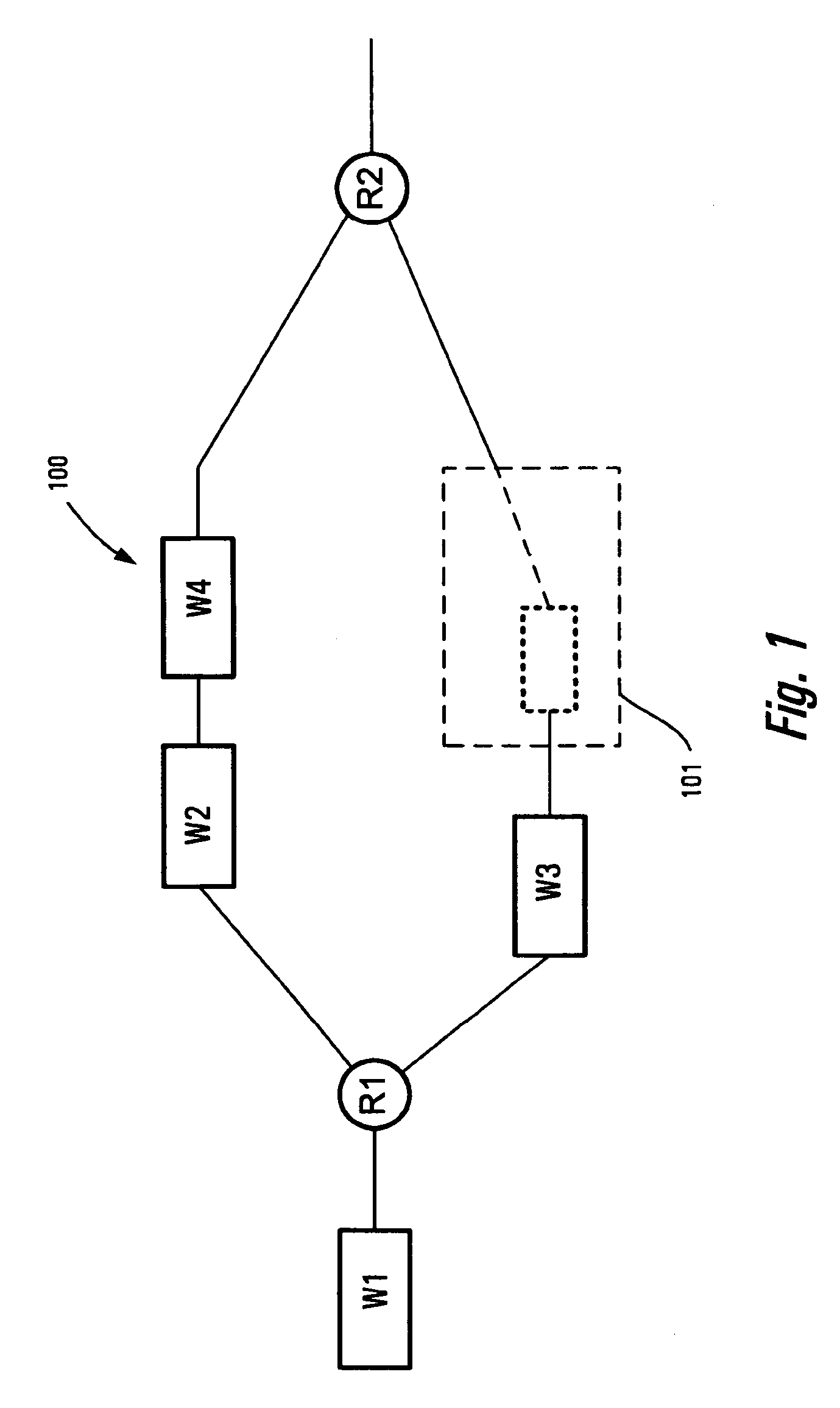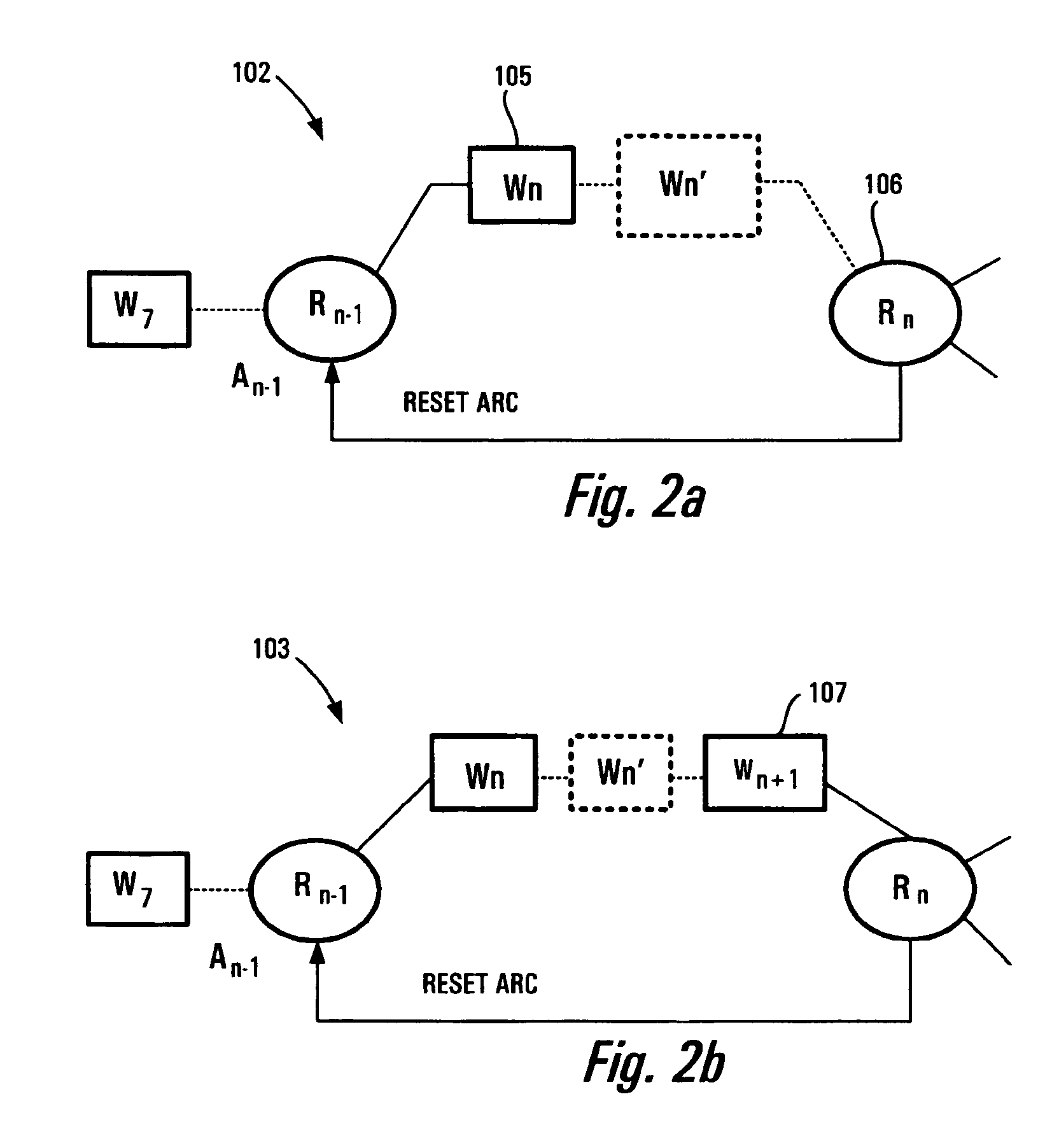Migration of a workflow system to changed process definitions
a workflow system and process definition technology, applied in the direction of multi-programming arrangements, instruments, program control, etc., can solve the problems of lack of detailed knowledge of the process, inability to provide the required resources, and the method of executing a process instance according to the current state of the art essentially remains static, so as to achieve the effect of enhancing flexibility
- Summary
- Abstract
- Description
- Claims
- Application Information
AI Technical Summary
Benefits of technology
Problems solved by technology
Method used
Image
Examples
Embodiment Construction
[0018]Preferred embodiments of this invention and modifications thereof will now be described with reference to the accompanying drawings.
[0019]A method for executing a workflow in a WFMS according to the invention starts with defining an original process definition P, which describes a business process and which is enacted by the different process instances.
[0020]In this context it should be mentioned that the process definition can in general describe and simulate any kind of process, in particular any technical process, e.g. a process for manufacturing any kind of devices. Thus, the process workflow can generally describe any kind of process which includes a plurality of processing steps.
[0021]As explained in the following, the original process definition may be a provisional in such a way that it may be modified during the execution of the instances.
[0022]In FIG. 1, a simple example is shown for an original process definition 100. The graph corresponding to the process definitio...
PUM
 Login to View More
Login to View More Abstract
Description
Claims
Application Information
 Login to View More
Login to View More - R&D
- Intellectual Property
- Life Sciences
- Materials
- Tech Scout
- Unparalleled Data Quality
- Higher Quality Content
- 60% Fewer Hallucinations
Browse by: Latest US Patents, China's latest patents, Technical Efficacy Thesaurus, Application Domain, Technology Topic, Popular Technical Reports.
© 2025 PatSnap. All rights reserved.Legal|Privacy policy|Modern Slavery Act Transparency Statement|Sitemap|About US| Contact US: help@patsnap.com



